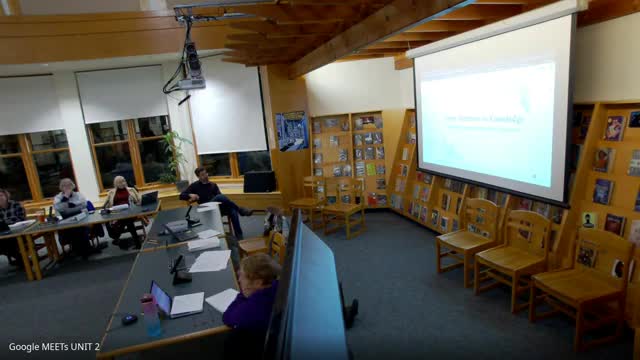District outlines K–7 data systems, flex groups and intervention practices ahead of budget season
March 02, 2025 | RSU 60/MSAD 60, School Districts, Maine
This article was created by AI summarizing key points discussed. AI makes mistakes, so for full details and context, please refer to the video of the full meeting. Please report any errors so we can fix them. Report an error »

Elementary administrators presented a detailed overview of how K–7 schools collect and use assessment data to guide instruction and intervention.
"We sat down as an elementary team and really tried to pull all of the things that we do all of the time...and put it into one place," a school staff member said while introducing the slides on assessment and intervention. The presentation described daily and periodic measures (exit tickets, benchmark assessments, running records, NWEA and BAS/BASc reports) that feed grade-level data walls used to plan flex-groupings and interventions. Administrators said these data walls list every student and are used to prioritize groups, choose interventions, and assign staffing.
Nut graf: administrators told the board that spring data meetings and summer planning create the fall rosters and flex groups so instruction can begin with clear priorities on day one. The presentation detailed the district’s approach to screening (phonological awareness, Words Their Way spelling inventories, rapid naming), progress monitoring, tiered interventions (20–30 minute pullouts, three-to-five days per week for small groups), and selection of evidence-based programs for reading and math.
The presentation also described collaboration between teachers, interventionists and administrators through MTSS meetings, and said interventionists monitor progress on 6–8 week cycles and adjust programs if students do not respond. The elementary presenters said they strive to use interventions that are different from core instruction to determine effectiveness and that detailed data meetings inform summer planning and fall placements.
The board heard several parent questions about screen time and teacher engagement measures; administrators said there is no fixed district cap on “instructional” screen time and that teachers make purposeful choices about device use. Administrators said teacher engagement is measured through observation rubrics and targeted walkthroughs that record opportunities to respond, positive correction ratios and other classroom practices.
The presentation materials will be shared with the board and used during upcoming budget hearings to align resources with intervention needs.
"We sat down as an elementary team and really tried to pull all of the things that we do all of the time...and put it into one place," a school staff member said while introducing the slides on assessment and intervention. The presentation described daily and periodic measures (exit tickets, benchmark assessments, running records, NWEA and BAS/BASc reports) that feed grade-level data walls used to plan flex-groupings and interventions. Administrators said these data walls list every student and are used to prioritize groups, choose interventions, and assign staffing.
Nut graf: administrators told the board that spring data meetings and summer planning create the fall rosters and flex groups so instruction can begin with clear priorities on day one. The presentation detailed the district’s approach to screening (phonological awareness, Words Their Way spelling inventories, rapid naming), progress monitoring, tiered interventions (20–30 minute pullouts, three-to-five days per week for small groups), and selection of evidence-based programs for reading and math.
The presentation also described collaboration between teachers, interventionists and administrators through MTSS meetings, and said interventionists monitor progress on 6–8 week cycles and adjust programs if students do not respond. The elementary presenters said they strive to use interventions that are different from core instruction to determine effectiveness and that detailed data meetings inform summer planning and fall placements.
The board heard several parent questions about screen time and teacher engagement measures; administrators said there is no fixed district cap on “instructional” screen time and that teachers make purposeful choices about device use. Administrators said teacher engagement is measured through observation rubrics and targeted walkthroughs that record opportunities to respond, positive correction ratios and other classroom practices.
The presentation materials will be shared with the board and used during upcoming budget hearings to align resources with intervention needs.
View full meeting
This article is based on a recent meeting—watch the full video and explore the complete transcript for deeper insights into the discussion.
View full meeting
